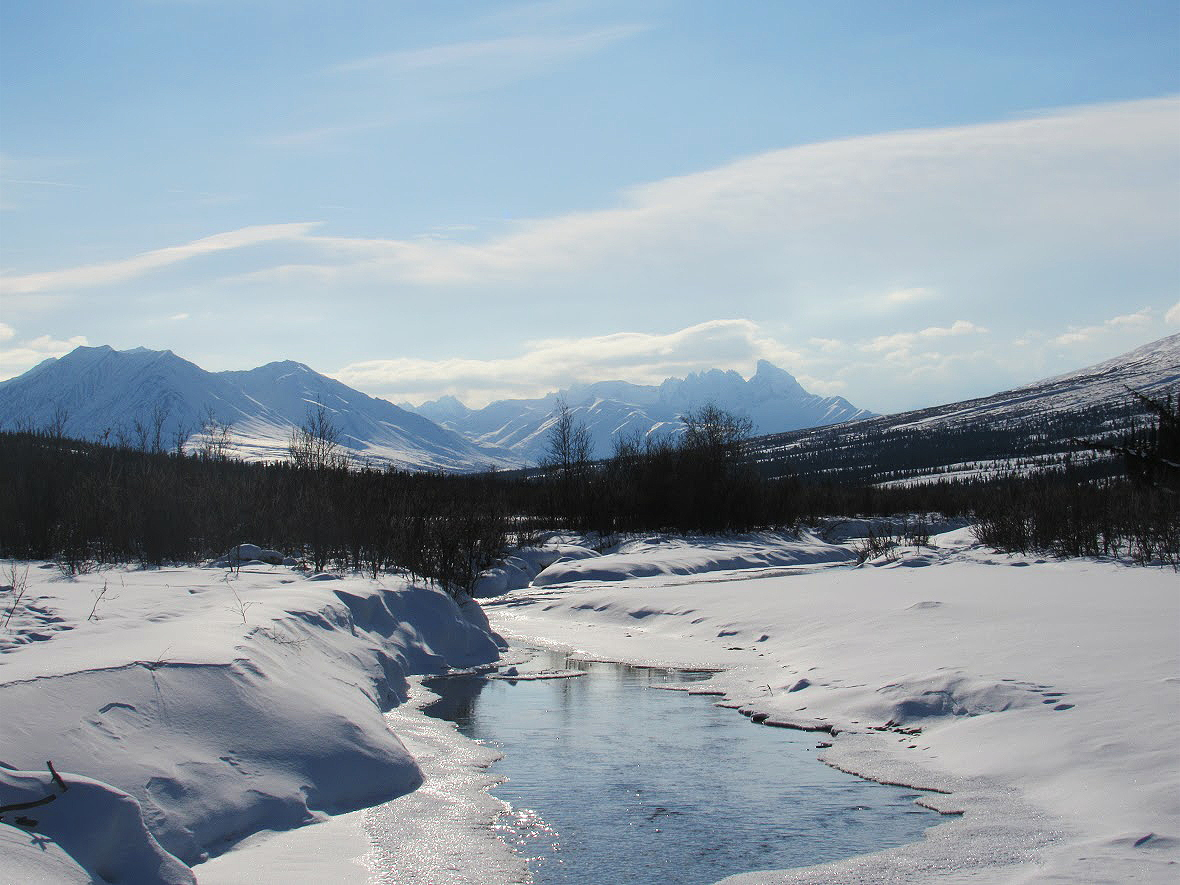The Great Alaskan Toboggan Expedition - Part II
The Preparation:
Landing in Anchorage in March was a new experience, this being my first visit to the Last Frontier in a winter month. The mountains had much more snow and darkness actually came every evening to cover the snow for about half of each day.
As weather would dictate, the route of the Iditarod had been changed a few weeks prior, forcing our assembling crew to evaluate the route we would travel and logistics of the bison expedition. Our best option was to follow the Iron Dog trail, a slight variation to the Iditarod. Our preparations seemed endless, but after a couple of days focused on the hunt, our sleds were tuned, toboggans fully rigged and minor repairs made, food and gear packed, and anticipation was bubbling.

The Journey Begins:
We set off midday from Deshka Landing and made it as far as Skwentna Roadhouse. Our passing into the Alaskan interior's home of abundant wildlife and remote residents was both intimidating and intriguing. As we passed lake and gully, river and cliff in the coming days, we felt more welcomed as we were greeted by smiling faces of remote oasis owners along with occasional wondering looks from Arctic fox, grazing moose, migrating caribou, sneaking lynx, and eventually herding bison.

The Challenging Trail:
The trail was often in bad shape requiring slow travel and heavy workload on our gear. The elevation changes and untamed country required this expedition team to often use ropes and pulleys to navigate precarious stretches. Open water was crossed several times and glaciating mountain sides made for several technical triumphs. I truly came to appreciate the miles that the toboggans had endured not only on this trip, but on thousands of frontier miles prior.
One toboggan had been over the mountain range a couple of times hauling gear and bounty in past expeditions. The welded steel hitch finally gave way on a stretch through the mountain pass. Although the scenery was beautiful, the breakdown came on a day earmarked for a long stretch of miles to be covered in order to reach Rohn by nightfall. Rising to the occasion, I saw this as an opportunity to apply some technique I had learned through visiting toboggan customers in a remote native community the summer before. This band of Dene preferred a braided rope hitch between the toboggan and snowmobile. Although not great for hills, this technique was especially effective for hauling heavy loads as it allowed the snowmobile to gain acceleration as the hitch stretched in turn providing a smoother ride over rough trail. We were back on the road within an hour testing out our newly field designed rope hitch and sleep roll bumper system.

Alas, the Rohn Roadhouse came into view, not only marking the remote check in for notorious mushers racing to Nome, but also marking the edge of bison ranging country.


